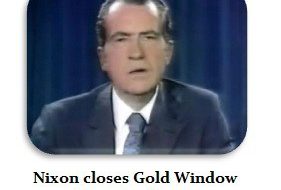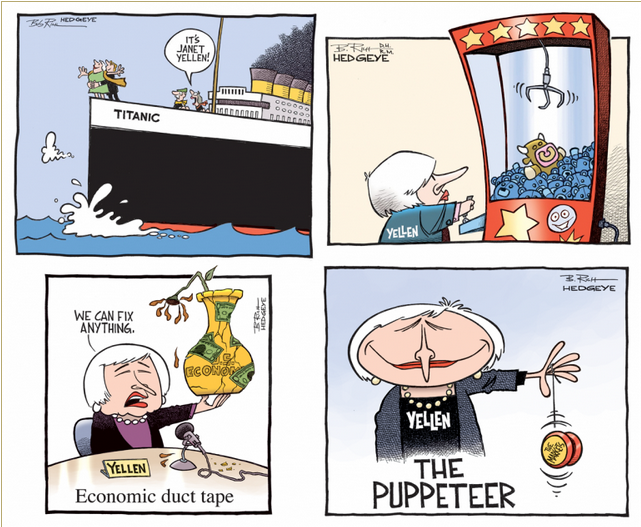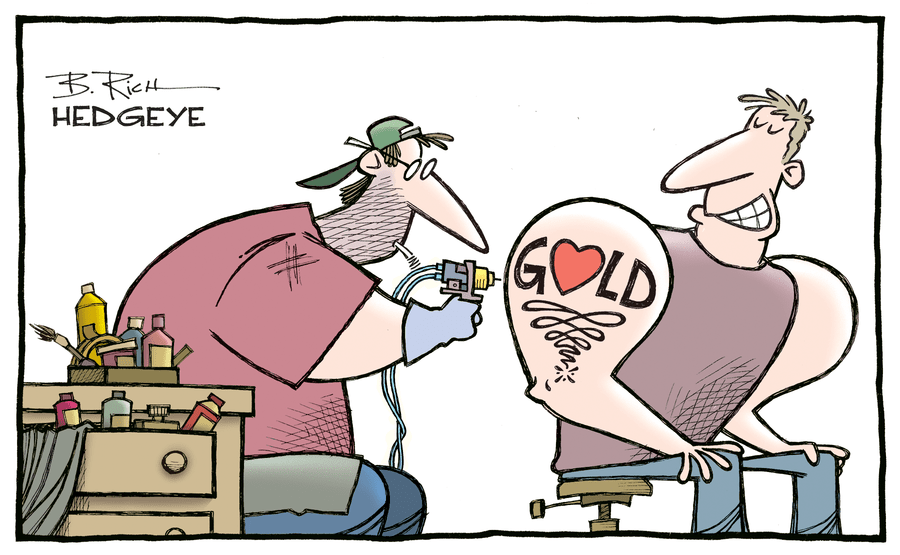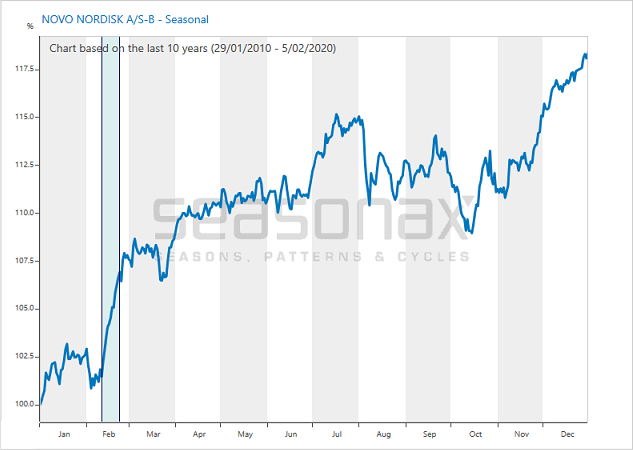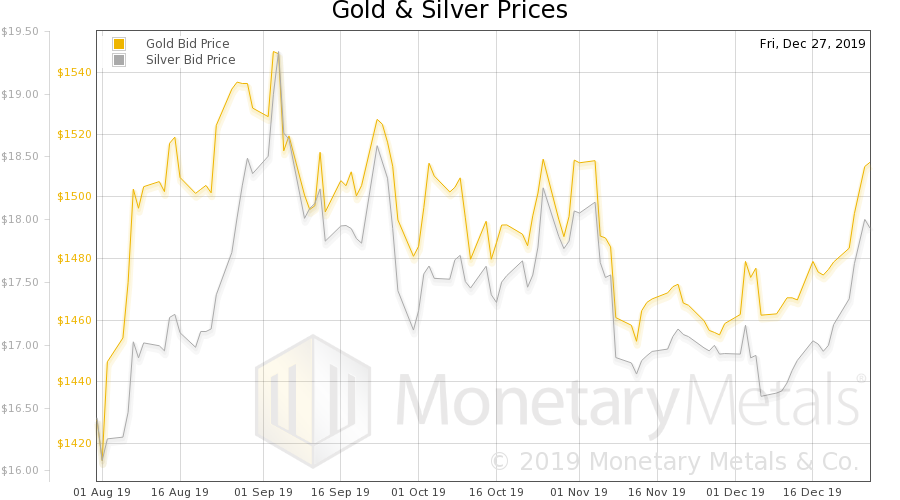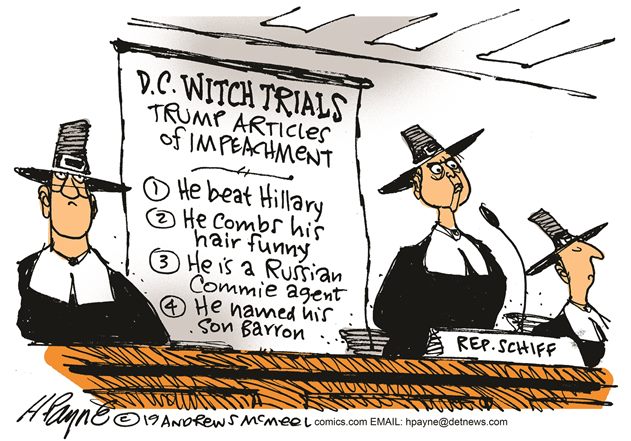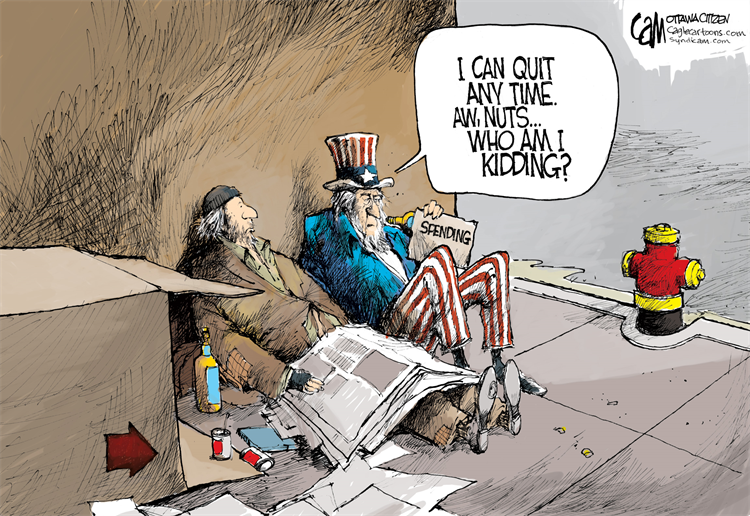Pre-Election Market Movers – Mr. Comey and the Trio InfernalBefore this Monday, the S&P 500 Index went down nine days in a row. While this was almost unprecedented (or in any case, a very rare event) the decline was quite small overall. The timing of the pullback and the subsequent strong rebound on Monday suggests that Mr. Comey’s letters to Congress regarding the FBI investigation into official emails by Hillary Clinton – which have found their way unto a computer owned by Anthony Weiner (the former husband of Clinton’s right-hand woman Huma Abedin) – were the “trigger” for these moves. |
 . FBI chief Comey and the Trio Infernal: Huma Abedin, Anthony Weiner and Hillary Clinton. Weiner is embroiled in a rather unsavory scandal – allegedly he has inter alia mailed pictures of his unclothed reproductive organs to a minor. The FBI has detected some 650,000 emails on his computer that seem to have come from Ms. Clinton’s private email server, which she in turn used in her official capacity as Secretary of State (her use of this device violated regulations and testified to her lack of sound judgment). Image credit: Robyn Beck, Don Emmert / AFP / Getty Images |
Volatility IndexHowever, although realized market volatility was small, implied volatility measures such as the VIX increased quite sharply, showing strong demand for index options. Late last week the VIX broke above a minor resistance zone we have highlighted previously, but it has declined back below it on Monday (admittedly the concept of “support and resistance” is actually a bit dubious in the context of a measure of implied volatility). Other measures indicative of frantic hedging activity (the VXO/VIX ratio, Skew, VVIX – the volatility of volatility) spiked considerably as well. If everybody is hedging and pushing up implied volatility measures in the process, while actual volatility remains at the same time fairly subdued, a strong short term rebound is usually fairly close. |
Volatility Index |
Daily GoldSimilar moves could be observed on occasion of the “Brexit” as well – volatility measures rose sharply in the week ahead of the referendum. If one compares the Brexit with the current situation, it can be seen that the precise timing of the associated short term market moves is not always preordained. In view of Monday’s market action we can state that the “standard expectation” has been fulfilled, but it appears to have happened at least one day too early. At the same time, gold has been strong ever since Mr. Comey sent his first letter to Congress (which indicated that the investigation into the email affair would be reopened) and declined noticeably on Monday in the wake of the second letter which informed lawmakers that the reopened investigation would once again not lead to an indictment. |
Daily Gold |
The Election and the Stock MarketThe question is now whether the standard expectation will continue to be fulfilled and to what extent this depends on the election result. Conventional wisdom has it that Mr. Trump is “bad for stocks” and Ms. Clinton is “good for stocks”. We would take issue with this notion. It may be true to the extent that Mr. Trump as a non-politician and anti-establishment candidate is associated with greater “uncertainty” – but that’s about it. Neither candidate’s economic policy proposals are much to write home about – in fact, they are mostly disastrous or at least potentially disastrous. Ms. Clinton hasn’t made any proposals that are not socialistic and interventionist in nature (they inter alia include higher taxes and the continued subsidization of the utter waste of scarce resources known as “alternative energy”). In what way any of her ideas are supposed to be good for the stock market is a complete mystery. Perhaps there is some hope that her public and private positions will once again diverge, but that is uncertain. Mr. Trump is at least a businessman and wants to cut taxes and simplify the tax code – which would without a doubt be a strong positive for the economy. On the other hand, his ideas about trade sound as though they could be quite disruptive (if he manages to implement them, which is doubtful). He shares Ms. Clinton’s bizarre predilection for “infrastructure spending”, which is economic nonsense of potentially gargantuan proportions. In fact, his spending plans are likely to impose a major burden on the economy. Overall, we like his program marginally better, but we see no reason to call for a praise singer. Anyway, we would suggest that regardless of who wins the election, the next president is highly likely to preside over another financial and economic crisis. Even if such a crisis is not necessarily imminent, it is nigh unavoidable. We believe this to be a near apodictic certainty; we will discuss the economic backdrop in more detail in a follow-up post though – for now let us return to the markets. |
Vola MeasuresA collection of implied volatility measures that recently moved to levels which are often associated with short term lows. From top to bottom: VVIX (the volatility of the VIX itself), Skew (the CBOE Skew Index is an option-based indicator that measures the perceived tail risk of the distribution of S&P 500 Index log returns over a 30- day horizon) and the VXO/VIX ratio (the ratio of the implied volatility of OEX vs. SPX options). Note also that the term structure of the VIX has recently inverted, a sign of growing fear about the market’s near term performance – click to enlarge. |
S&P 500 Large Cap IndexIs there anything that suggests that the stock market might get into trouble no matter what? We would say the answer is yes. For one thing, valuations remain firmly stuck in Absurdistan. In terms of price/earnings ratios, the median stock has never been more overvalued than today. Price/sales ratios are at record highs as well. At the same time, corporations are drowning in debt (which likewise stands at a record high). There exist large corporate cash holdings, but they are by no means offsetting this debt, as they are largely held by just a handful of large companies (most of which have actually very little debt). All of this suggests that the stock market will deliver very poor long term returns, but what about the near term? Considering the data discussed above, shouldn’t one expect an extended rally similar to the post-Brexit period? Perhaps, but there are a few warning signs one should not ignore. First of all, consider the chart of the S&P 500 Index itself (the DJIA is in a similar position). On Monday the index has actually closed right at a “do or die” level: |
S&P 500 Large Cap Index
The SPX has broken above a long term resistance level, and soon thereafter broken back below it. In Monday’s action it has just about fallen short of negating this “false breakout” warning (h/t to our friend BA for pointing these developments out to us). Note that other indexes are diverging from the SPX – the broad-based NYA has made a lower high, while the tech-heavy, hut narrower NDX remains above the equivalent breakout level (the broader Nasdaq Composite has mimicked the action of the SPX) – click to enlarge. |
PC RatiosUnless the SPX continues to rally right away and breaks decisively back above the support/resistance area indicated with the blue dotted lines above, we could be looking at a false breakout. False breakouts and breakdowns are often very powerful signals. Here are a few examples for both: A false breakdown in gold stocks below a multi-month lateral support line in mid January this year was followed by one of the biggest and fastest sector rallies in history. The beginning of the great bull market in stocks in 1982 was preceded by a false breakdown below a lateral support as well. The crashes of 1929 and 1987 were preceded by false breakouts above resistance levels (these were comparatively short term in nature, but the principle still applies). In spite of elevated volatility measures, a warning signal is detectable on the options front as well. It is well-known that equity option put/call ratios are a contrary indicator, while OEX put/call ratios are generally considered a confirming indicator. Steve Saville of The Speculative Investor (a newsletter we warmly recommend; we are not affiliated with it in any way) has recently come up with the excellent idea to construct a ratio of the 10-day moving averages of the two ratios, which can be seen as a kind of “dumb money/ smart money” confidence spread. Since he has been the first person to do so, the indicator has been christened the TSI Put-Call Indicator, or TPCI. Below we show a chart of the 10 day moving average of the equity put-call ratio, the 10 day ma of the OEX put-call ratio, the TPCI and the SPX. We have highlighted previous periods of TPCI sell signals and the subsequent market action: |
PC Ratios - Click to enlarge |
NYSE High-Low IndexThe 10 day moving average of the equity put-call ratio, the 10 day ma of the OEX put-call ratio, the TPCI and the SPX. Note the previous TCPI extremes (red rectangles) below the “sell zone” (red dotted line) and the subsequent market declines. Conversely, when the indicator rises into the “buy zone” (green dotted line), the market is usually close to a strong rally from oversold conditions. Moreover, market internals continue to look quite dubious: Weakening market internals testify to dwindling risk appetite: NYSE new high/ new low index, the cumulative NYSE advance/decline line, NYSE stocks above the 200 and 50 day moving averages, and the NYA itself (which has made a lower high relative to 2015 and relative to SPX/DJIA and Nasdaq) – click to enlarge. As a final remark, Frank Roellingers highly successful Modified Ned Davies Method has sold 50% of its long Russell 2000 exposure as of the close of Friday for a 6.1% gain from the 100% buy signal that was given on February 26 at 1037.18 points. We take this as an additional warning sign. |
NYSE High-Low Index |
Conclusion
Anecdotal evidence suggests to us that a post election rally has become fairly widely expected. Even a number of well-known bears have adopted a cautious wait-and-see stance and have lightened up on bets against the stock market. Admittedly our perception may be skewed, and we cannot back this impression with statistics; it is just something we have noticed en passant.
We don’t think the situation is really all that clear – even though the stock market’s seasonally strong period has just begun as well. It seems to us that stock market risk remains quite high over coming weeks and months, whether considered from a technical/ positioning or fundamental perspective.
We have only briefly touched on gold, as we have updated our view on it not too long ago (we expected a trading range to develop, and that seems to be the case so far). Gold fundamentals remain mixed, but we think they are likely to turn more decisively bullish in coming months. Interestingly, the recent extended trading range continues to be roughly in line with the mid 1970s template.
Addendum: Triggers
The idea that stock market participants were worried about a potential Trump victory last week may well be wrong. We actually believe it more likely that the markets were bothered by the potential for a constitutional crisis if one of the candidates were to be indicted shortly before the election, or subjected to impeachment proceedings shortly thereafter. Mr. Comey’s announcement regarding the additional e-mails found by the FBI renewed this threat.
Trump may be associated with “uncertainty”, but in our opinion Ms. Clinton isn’t any better in this respect. For example, her belligerent attitude toward Russia is as dangerous as it is unpredictable. Trump doesn’t drink or take drugs; Ms. Clinton is not only known for occasionally (over)indulging in alcoholic beverages, but also for sudden emotional outbursts of reportedly unusual ferocity as well as bouts of “confusion” (Google it – members of her staff have complained about all these things). Even if these issues are rarely discussed in the mainstream media, we are quite sure that “the market” knows about them.
Lastly, what the election outcome as such portends depends strongly on the results of the Congressional elections as well. The president may well end up hamstrung by Congress.
Charts by: StockCharts
Full story here Are you the author? Previous post See more for Next post
Tags: Chart Update,newslettersent,On Politics,The Stock Market































